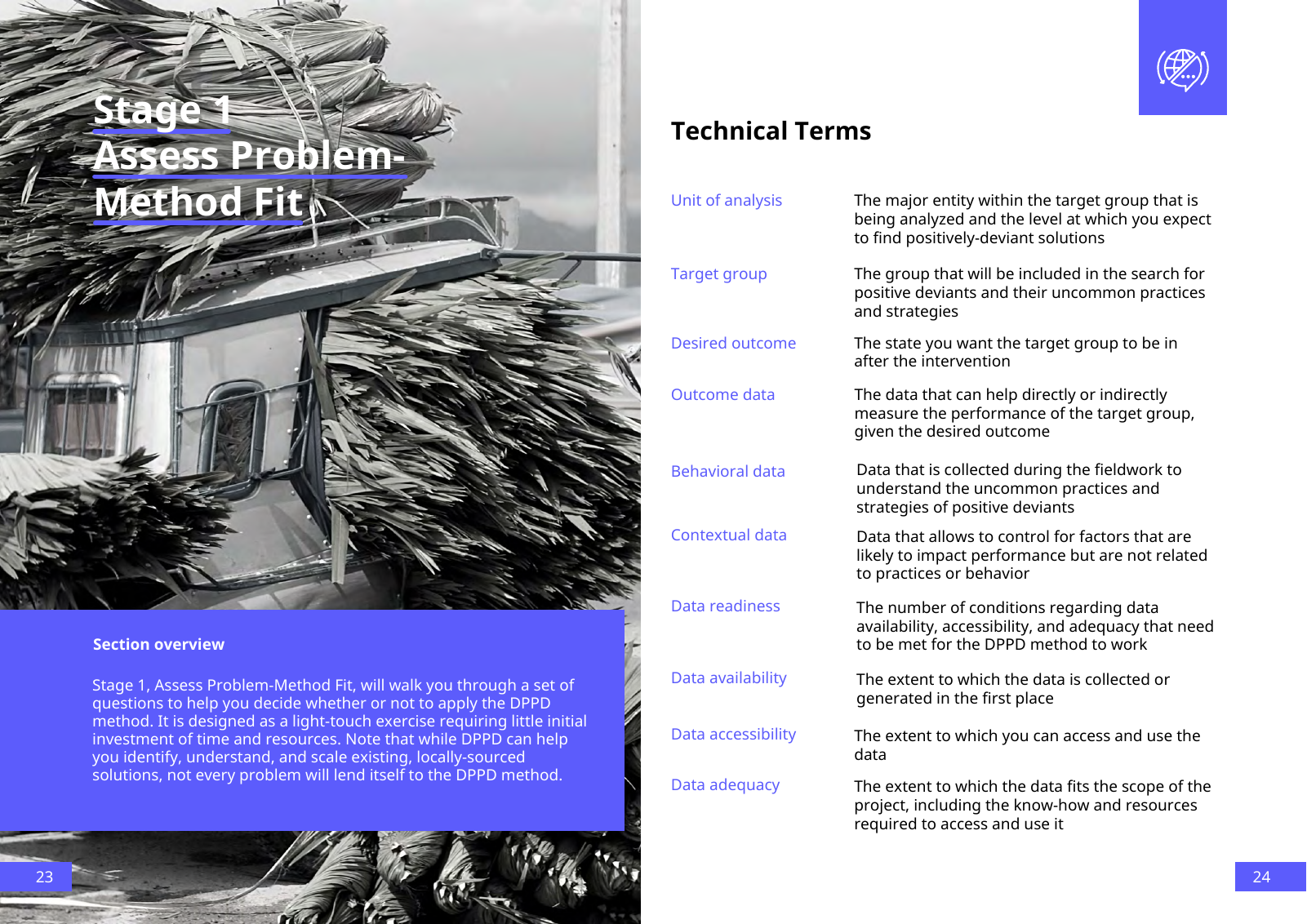The major entity within the target group that is being analyzed and the level at which you expect to find positively deviant solutions The group that will be included in the search for positive deviants and their uncommon practices and strategies Unit of analysis Target group Technical Terms The state you want the target group to be in after the intervention Desired outcome The data that can help directly or indirectly measure the performance of the target group given the desired outcome Outcome data Stage 1 Assess Problem Method Fit Data that is collected during the fieldwork to understand the uncommon practices and strategies of positive deviants The number of conditions regarding data availability accessibility and adequacy that need to be met for the DPPD method to work Behavioral data Data readiness The extent to which the data is collected or generated in the first place Data availability The extent to which you can access and use the data Data accessibility The extent to which the data fits the scope of the project including the know how and resources required to access and use it Data adequacy Data that allows to control for factors that are likely to impact performance but are not related to practices or behavior Contextual data Stage 1 Assess Problem Method Fit will walk you through a set of questions to help you decide whether or not to apply the DPPD method It is designed as a light touch exercise requiring little initial investment of time and resources Note that while DPPD can help you identify understand and scale existing locally sourced solutions not every problem will lend itself to the DPPD method Section overview 23 24

Hinweis: Dies ist eine maschinenlesbare No-Flash Ansicht.
Klicken Sie hier um zur Online-Version zu gelangen.
Klicken Sie hier um zur Online-Version zu gelangen.